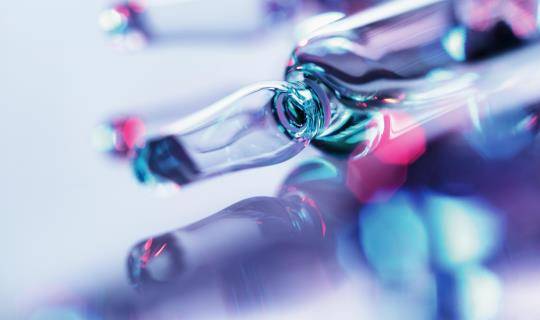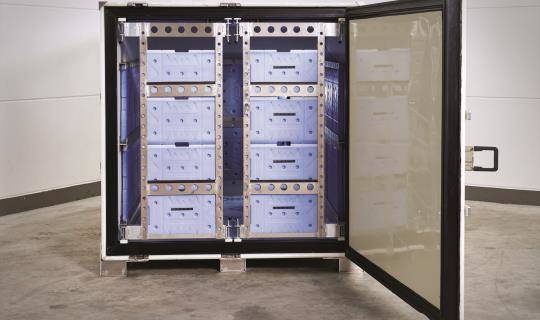Article: Scandinavia / Nordic: Are They Just Ice and Snow?
By World Courier
This article first appeared on the Journal for Clinical Studies, May 2015
Let's start by clarifying what we are talking about, as defining the difference between what comprises Scandinavia and what’s Nordic is as clear to most of us as the distinction between the UK and Great Britain, or the Netherlands and Holland.
Scandinavia is Sweden, Norway and Denmark. Nordic countries are Sweden, Norway, Denmark (including Greenland and the Faroe Islands, which belong to Denmark), Finland (including Åland, which belongs to Finland), Svalbard and Iceland as well. As an aside: Iceland is very green, Greenland is covered in ice.
Hopefully that’s all clear now!
The area is ripe with innovation; Swedish inventions include the zip, refrigerator, pacemaker and computer mouse. The Danes created the world’s most popular toy. Sales at Lego (now the world’s largest toy-maker) top $2 billion per annum. The Finns boast Nokia phones, named for the river Nokianvirta which flows through the town where the company began. Nokia is the world’s largest digital camera manufacturer. Not to be left out, Norway invented the cheese slicer and the spray can.
Denmark, Finland and Sweden are all members of the EU. Finland is part of the Eurozone, whilst the other three countries maintain their national version of the Kroner. All these countries have stable economies, even given the blip that Iceland experienced, and universal welfare systems with high levels of public spending on health. The four main countries take high positions at the top of league tables for economic competitiveness, social health and happiness, with Iceland topping the global life expectancy tables for men at 81.2 years.
"Denmark leads the way in clinical trials, with more than 4700 so far."
Sweden has run over 3200 trials.These numbers reflect the progressive biotech industry in the two countries, where there are over 250 companies clustered in Medicon Valley (comprising the eastern part of Denmark and southwestern part of Sweden). In Norway, over 2500 trials have run, and in Finland around 1980, Iceland has been quieter with just below 100 trials, despite a booming biotech industry. Danish enzyme manufacturers today produce more than 70% of the total enzyme production worldwide, and there is a very active Dansk Biotek association. In addition, Denmark holds the world’s greatest percentage of patents in biotechnology. The Danish national health system registers the entire population “from embryo to grave”, a system that means Denmark is home to more than 500 bio banks and extensive medical records.
Clinical Trials
Norway is supporting its own biotech industry, with the Research Council of Norway investing 10 million NOK (approximately $1.3 million) in 10 companies over four years. This is supported by infrastructure, including the Oslo Cancer Cluster and the Norwegian University of Life Sciences.
The Finnish pharmaceutical industry employs about 5400 people in research and development, marketing and production and associated jobs. There are some large production facilities in Espoo, Tampere and Turku, and national pharmaceutical exports were some 935 million Euros in 2013.
Dealing with the EU countries requires interaction with a single regulatory process. Regulation (EU) No 536/2014 on clinical trials on medicinal products for human use relates to clinical trial applications and practice, and 2013/C 343/01 Guidelines on Good Distribution Practice of medicinal products for human use is applicable for transportation and storage. This cuts down the workload tremendously, with single applications covering Europe and standardised requirements for shipping. Iceland and Norway use harmonised regulations and are both part of the European Economic Area (EEA) and the European Free Trade Association, which makes it very straightforward to import from the EU into both countries or intra-EU into Denmark, Finland and Sweden. Bear in mind there are some local requirements once in the country. For example, Finland requires all pharmaceuticals to be sent via a licensed importer before they can be delivered to the ultimate consignee. Importing from outside the EU will require invoices and sometimes import permits, depending on the consignee for all these locations. For Finland, it could also require a statement from the consignee.
"Considering the straightforward nature of the shipping processes, the most challenging consideration of logistics in this region may be the climate."
In the winter across the region, the warmest temperatures are likely to hover around freezing. North of the Arctic Circle the sun barely rises in winter, and the temperatures regularly drop to -20°C. Ensuring that the packaging you select is capable of withstanding external low temperatures, or using temperature-controlled vehicles to keep your supplies warm is imperative. Consideration should be taken when choosing site locations, as there can be infrastructural challenges due to the long distances (Sweden is 2000km, by road 1574km as the crow flies north to south), and there are strict regulations on transporting dry ice on domestic flights.
Up in the chilly North of Europe, there are few problems finding colleagues to run clinical trials. English is spoken universally, research staff are keen to take part in trials, and there is considerable expertise and enthusiasm to ensure success.


